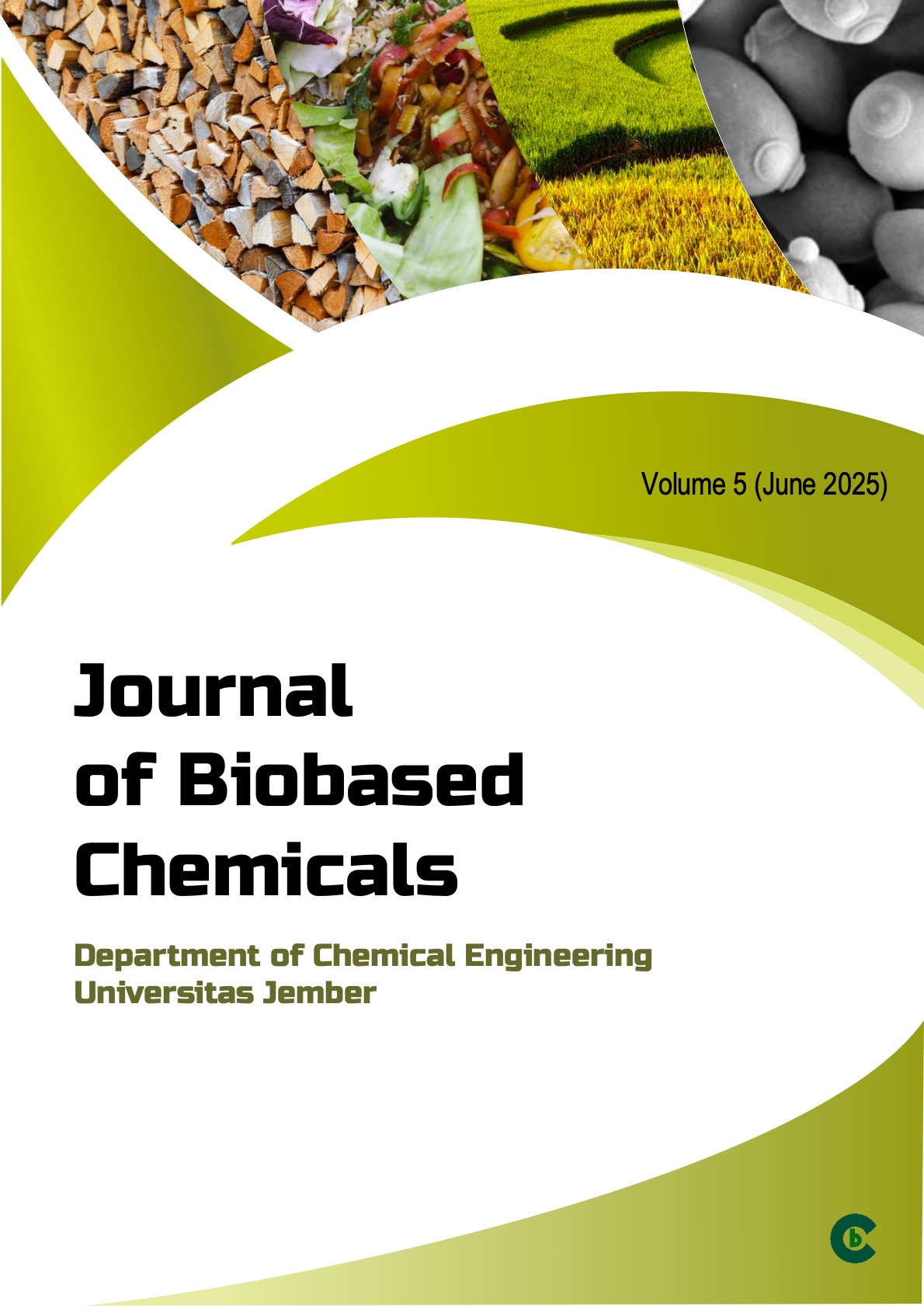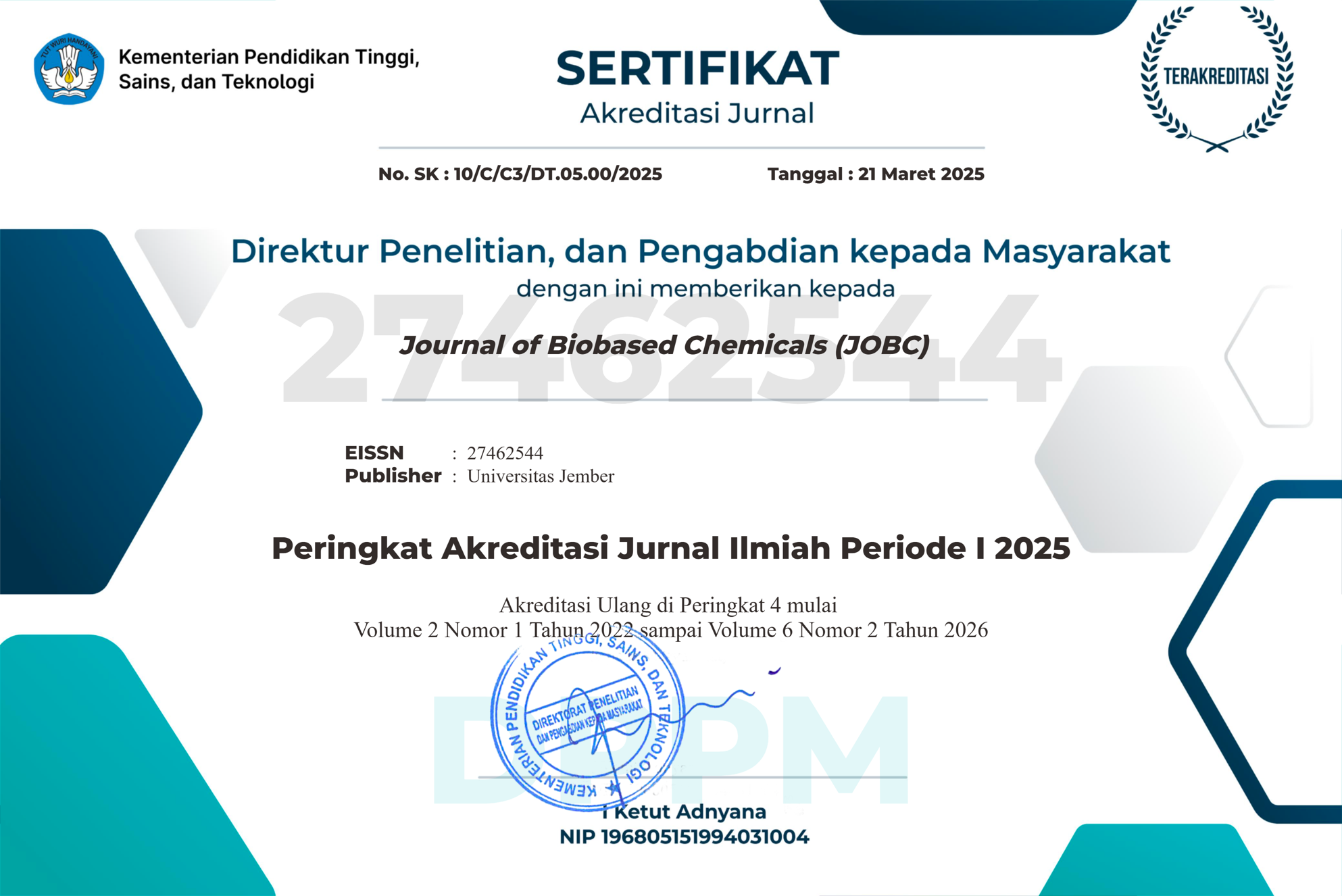Evaluation of Nutmeg Extract as a Natural Anti-Acne Agent Against P. acnest
DOI:
https://doi.org/10.19184/jobc.v5i1.5590Keywords:
myristica fragrans, flavonoids, phytochemicals, antibacterial activity, Cutibacterium acnes, acne, natural cosmetics, disc diffusionAbstract
Acne vulgaris is a common inflammatory skin disorder primarily caused by the proliferation of Propionibacterium acnes. In response to increasing demand for natural and safer therapeutic alternatives, this study investigated the phytochemical composition, total flavonoid content, and antibacterial activity of the ethanolic extract of Myristica fragrans flesh. Phytochemical screening revealed the presence of flavonoids, terpenoids, tannins, saponins, and alkaloids—classes of compounds widely recognized for their antimicrobial properties. The total flavonoid content (TFC), determined using the aluminum chloride colorimetric method, was found to be 0.1582 ± 0.0044 mg quercetin equivalents per gram of dry extract. Antibacterial assays using the disc diffusion method demonstrated dose-dependent inhibition of both Staphylococcus aureus and P. acnes, with greater efficacy observed against P. acnes. These results suggest that nutmeg flesh extract possesses significant antibacterial potential, particularly as a candidate for anti-acne cosmetic formulations. Moreover, this study highlights the underexplored value of nutmeg flesh—a byproduct of spice processing—as a sustainable source of bioactive compounds for skincare applications.








